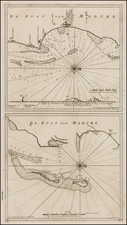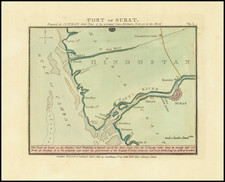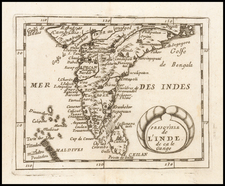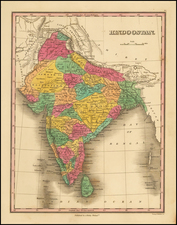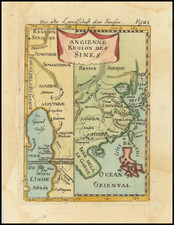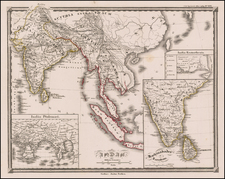Hindostan by William Home Lizars, with its inset depiction of the "Isle of Ceylon," offers a compelling glimpse into the early 19th-century geopolitical landscape of the Indian subcontinent. Notably, Lizars employed a color-coding system, distinguishing British territory, territories under British influence, territories of independent states, and Portuguese territory.
In the early 19th century, Britain's colonial rule on the Indian subcontinent was expanding rapidly, and this map aptly represents that historical moment. The visual color distinctions provide a stark illustration of Britain's dominion (represented in red) and areas under its influence (in yellow), contrasting sharply with territories of independent states (in green) and Portuguese holdings (in blue). This graphic portrayal of colonial influence underscores the burgeoning British control of the region during this period.
The map further illuminates the transitional period in Indian history when the region was gradually being subsumed under the aegis of the British East India Company. It presents a historical geographic context that underscores the trajectory of the subcontinent as it moved towards the consolidation of British rule, which would significantly shape its socio-political and economic structure.
The Lizars were a Scottish family of engravers and printers who produced many views and maps. Daniel Lizars Sr. (1754-1812) was the son of a shoemaker, but he apprenticed with Andrew Bell, a printer and engraver. Lizars set up his own printworks near St. Giles Cathedral and took on his own apprentices, including George Bartholomew, whose son John would go on to found the important mapmaking firm later know as John Bartholomew & Son Ltd.
Daniel Sr. had three sons: Daniel Jr., John, and William Home. He also had a daughter, Jane Home. Daniel Jr. (1793-1875), the youngest of the boys, apprenticed in his father’s shop alongside George Bartholomew. When his father died in 1812, Daniel Jr. took over much of the business, expanding it and specializing in maps. The company went bankrupt in 1832, however, and Daniel emigrated to Canada.
John Lizars (1792-1860), the middle son, studied medicine and became Professor of Surgery at the Royal College of Surgeons of Edinburgh, as well as senior surgeon at the Royal Infirmary of Edinburgh.
William Home Lizars (1788-1859), the eldest, also apprenticed in his father’s shop. After learning engraving, William entered the Trustees’ Academy to learn under John Graham. He was a skilled painter and artist. When his father died, and after his Daniel Jr. left, he carried on printing and invented a method of etching that looks like wood engraving.









